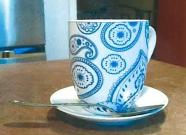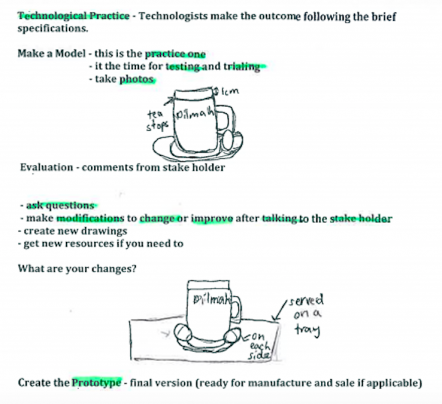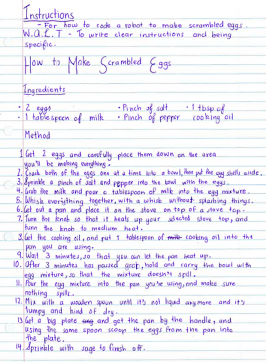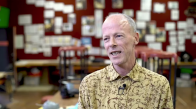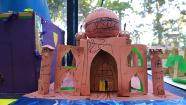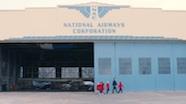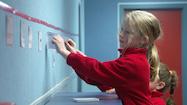Instructional writing and digital technologies
Instructional writing, decomposition of tasks, and instructional videos
Year 5–6 teacher, Dorothy Hutton, has been trialling approaches to see how she can effectively integrate the revised digital technologies curriculum content in her classroom.
Dorothy used the link between instructional writing and digital technologies to introduce her class to the concepts of computational thinking and designing and developing digital outcomes.
Instructional writing
Introducing technology vocabulary
At the beginning of the unit, Dorothy ran a simple class exercise that introduced some of the vocabulary of the three components within the Technological practice strand:
Making a cup of tea for the teacher
First, the students had to work through making Dorothy a good cup of tea.
Dorothy guided and supported the students to:
- write down the specifications for the cup of tea
- carry out functional modelling through discussion and drawings
- produce and evaluate their final product.
Making a cup of tea for stakeholders
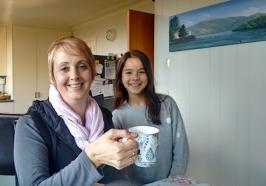

The next task was for students to find stakeholders and make them a hot drink of their choosing. This activity got parents involved as the stakeholders and they enjoyed supporting their children with the homework. It also created opportunities for conversations between the parents and the teacher.
Writing the instructions for making a cup of tea provided the context and opportunity to develop the students' instructional writing abilities.
See more teaching snapshots about technology and literacy
Computational thinking and the decomposition of tasks
Can a robot make a cup of tea?
Dorothy built on what the students had learnt from the work on instructional writing to introduce them to computational thinking and the decomposition of tasks.
The students had recently made a robot as part of their learning in art. They were asked to re-write their instructions for making a hot drink in a way that would allow a robot to replicate the process.
This learning aligns with progress outcome one in computational thinking:
In authentic contexts and taking account of end-users, students use their decomposition skills to break down simple non-computerised tasks into precise, unambiguous, step-by-step instructions (algorithmic thinking). They give these instructions, identify any errors in them as they are followed, and correct them (simple debugging).
CT, progress outcome one
To introduce this activity, the students had great fun watching the YouTube video clip Exact Instructions Challenge.
Testing for errors
After decomposing the instructions for making a cup of tea, the students did the same thing with another process that was of interest to them, such as how to make scrambled eggs.
The students and Dorothy pretended to be robots and acted out the instructions to test them for errors. The instructions for making scrambled eggs required the robot to separate the eggs and beat them with a beater. There was a great deal of laughter as they acted out beating the eggs and the shells. The students then altered the instructions to include, “discard the egg shells”.
"It has been interesting to observe how supportive the students are of each other when it comes to problem solving."
Dorothy Hutton, years 5–6 teacher at Columba College
Introducing coding
Dorothy also talked with the students about how decomposed tasks can then be coded and how to identify computer coding languages.
Some of the students had already had a go at coding. Columba College had enrolled students in a GROK Learning NCSS Challenge programme. Dorothy has worked alongside the students to complete the challenges which have mainly been done as homework. Parents have also shown great interest in this.
Designing and developing digital outcomes
Introducing DDDO
For the final part of the unit, the students to used their instructional writing skills to create instructional videos. She chose this activity to develop their understanding of the revised content in the DDDO progress outcomes.
This learning aligns with the components of the technological practice strand and with aspects of progress outcome one for DDDO:
In authentic contexts and taking account of end-users, students participate in teacher-led activities to develop, manipulate, store, retrieve, and share digital content in order to meet technological challenges.
DDDO, Progress outcome one
Creating instructional videos
The teachers and students wanted to share some techniques that can help students present their work digitally.
Two students who knew how to make a QuickTime video worked together to write down the steps. They practised the steps to ensure they hadn't missed anything and decided who would say each part. It took them several goes of testing and trialling before they had a DDDO that they were happy with.
Outcomes
The other students and staff all gave them very positive comments about what an effective teaching video it had been. They were able to follow the instructions for a successful outcome themselves. This inspired other students to create videos. Staff were also inspired and wanted to know how to make a YouTube channel and create and upload a video.
The first clip they put on their YouTube channel was Google Docs How to make a border.
It has been motivating for the students to transfer their learning from physical outcomes to digital practice with a clear brief, knowing their stakeholders, collecting their resources, planning their practice, and developing and evaluating their outcome.
Next steps
Sharing the approach
Dorothy has shared her approach with other staff members. The school is now thinking about how to map out the new digital curriculum content up to 2020 alongside existing technology projects, including other technological areas and other curriculum learning areas.
See more teaching snapshots about digital technologies
Related videos
Learning with the internet of things in years 5–6 (04:48)
Andrew Wills and the students at Bradford Primary School describe how they used their new knowledge in electronics to solve problems in their school....
Building technology inquiries in years 1–6 (02:47)
Shannon Maloney talks about building rich technology units within a programme of inquiry in years 1–6.
Technology and literacy in years 3–4: Flight inquiry (04:56)
Andrea Robertson describes the richness of their "amazing flight inquiry" – incorporating EOTC and learning in technology, literacy, and numeracy. ...
Technology, mathematics, and science in years 3–4: Flight inquiry (03.38)
Andrea Robertson and Lisa Hocking share how mathematics and science were incorporated into their technology learning.

